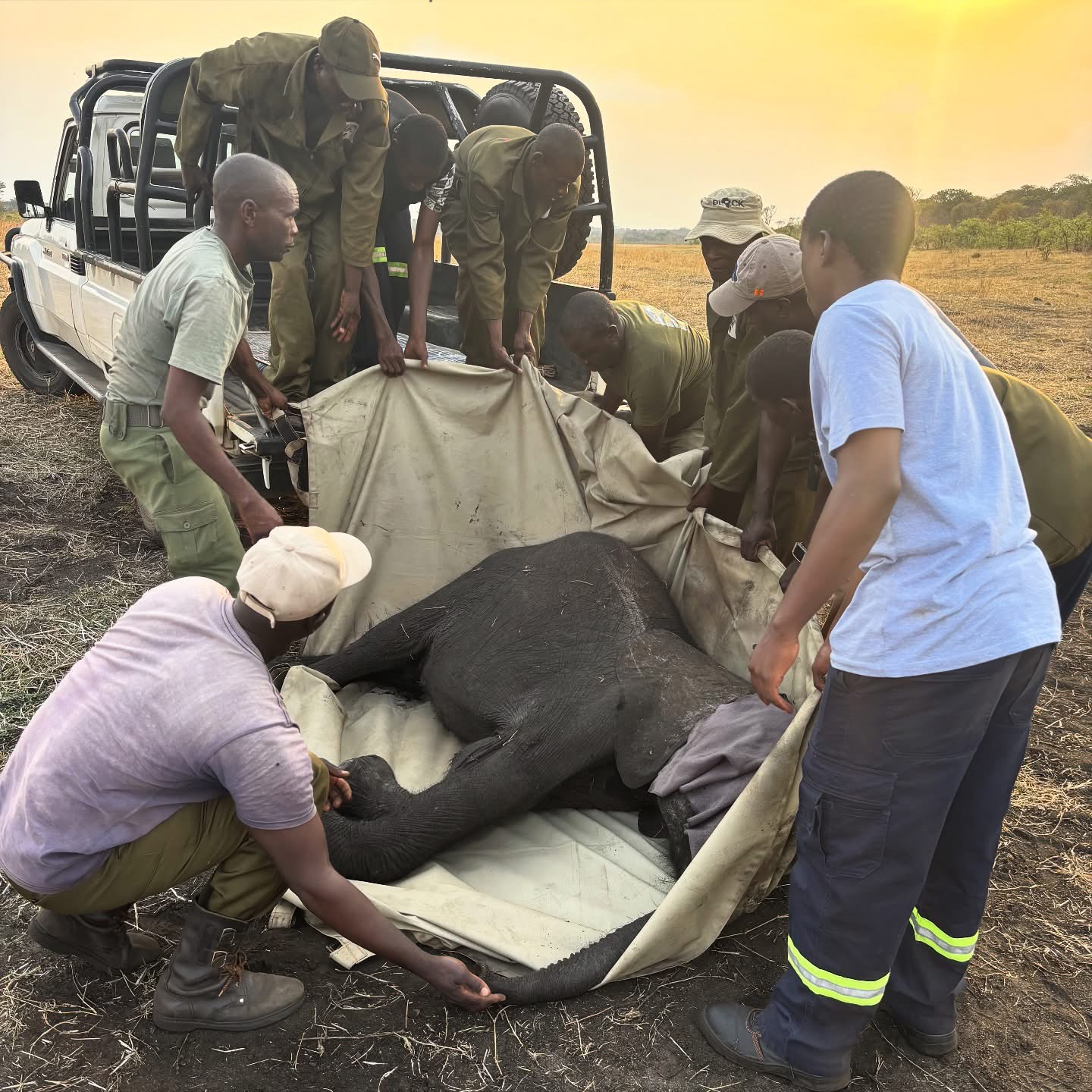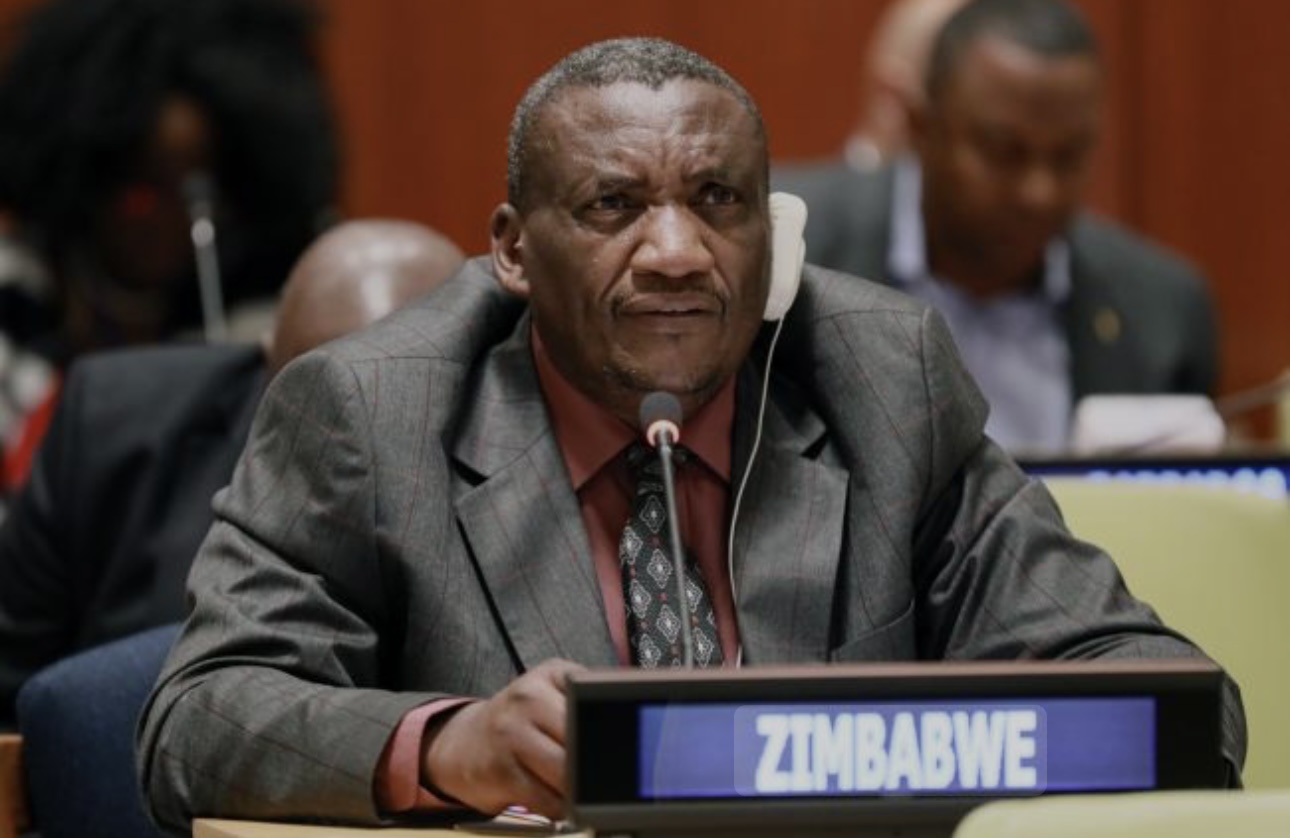BY NOKUTHABA DLAMINI
A young elephant calf has been rescued after being found alone in Zambezi National Park, near Victoria Falls.
According to Wild is Life – Zimbabwe Elephant Nursery, the calf was discovered wandering through Chambonda, looking weak and dehydrated.
“Two weeks ago, a small elephant calf was spotted wandering alone through Chambonda, in Zambezi National Park near Victoria Falls.
Thin. Dehydrated. Struggling to keep up with passing herds.
He had lost his mother – still just 18 months old, still of milk-drinking age, still far too young to survive alone. Elephant mothers never willingly abandon their calves. When a little one is alone, it almost always means tragedy.”
The team said things got worse when the calf was later seen being chased by hyenas.
“Then came another sighting… He was being chased by a pack of hyenas.
We knew we had to act.”
Working together with ZimParks, the Forestry Commission and the Victoria Falls Wildlife Trust, the rescue team searched for days.
“Together with ZimParks, the Forestry Commission, and the Victoria Falls Wildlife Trust, our Wild is Life team began the search. For days, there was nothing – just silence, heat, and tracks fading into dust.
Then, on Wednesday… hope.”
The calf was finally found near Chambonda Tented Camp.
“The calf was found near Chambonda Tented Camp, exhausted but alive. Under the fierce 38°C sun, the teams worked quickly – darting him safely, keeping watch for predators, and lifting his small body onto a Land Cruiser for the 40-minute drive to Panda Masuie.”
The team made sure he stayed calm and safe during the journey.
“It’s no small feat to move an elephant… even a baby. The team monitored his breathing and cooled him through the rough journey. The wild herds nearby never stirred. The forest stayed calm.”
When the calf arrived at Panda Masuie, the other elephants immediately sensed him.
“Even before they could see him, the Panda Masuie herd knew.
From across the bomas came deep rumbles and trumpets – the elephants announcing that a new life had joined their family.”
The post described a moving scene of welcome and care.
“When the calf awoke, Norah and Annabelle rushed to his side – trunks reaching, touching, comforting. The welcome lasted twenty minutes – a chorus of excitement and tenderness.
That night, Norah, Annabelle, Summer, and Maggie refused to leave him. They checked on him constantly, standing guard as he slept on his feet, still uncertain, still grieving.”
By the next morning, the little elephant was surrounded with love and safety.
“By morning, Moyo and her herd surrounded him with quiet care. And today, under the gentle patience of Paradzai, our most experienced Carer… He finally took his first full bottle of milk.
A moment of pure joy. A sign that trust has been found and strength will follow.”
Wild is Life shared a video of the elephants welcoming the calf, saying:
“Make sure to swipe to see the incredible video of the elephants welcoming the new baby 😍🐘 you may be moved to tears!”

 Slider3 years ago
Slider3 years ago
 National4 years ago
National4 years ago
 Tourism and Environment4 years ago
Tourism and Environment4 years ago
 Opinion4 years ago
Opinion4 years ago
 Special reports4 years ago
Special reports4 years ago
 National4 years ago
National4 years ago
 National3 years ago
National3 years ago
 National3 years ago
National3 years ago



